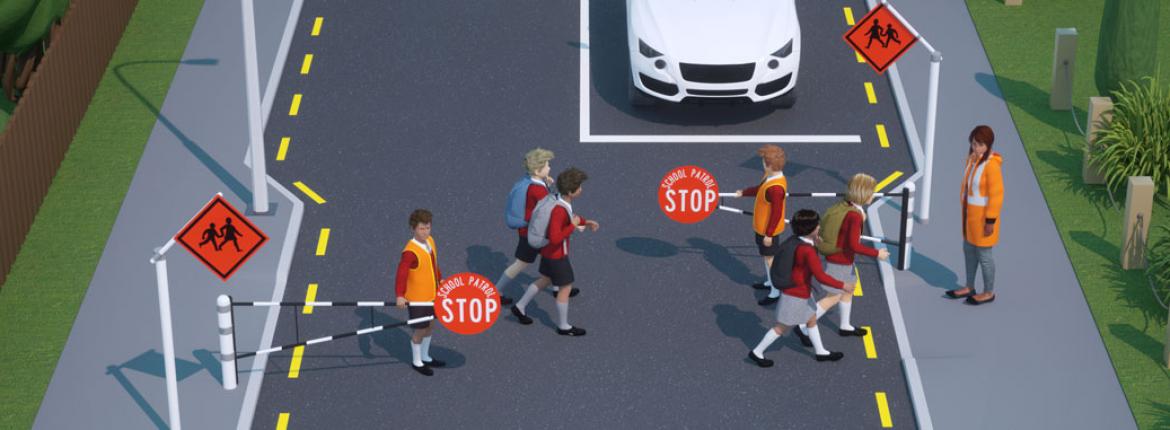At the ready
• prepare to stop near schools, bus stops and pedestrian crossings.
• be alert when driving past parked vehicles or roadside stalls as pedestrians may walk out without warning.
• watch out for the elderly, or people with disabilities.
• it’s compulsory to slow to 20km/h when passing or approaching a stationary school bus letting children on or off, no matter which side of the road you are on.
Pedestrian crossings
Pedestrians must use a signalised pedestrian crossing or zebra crossing if within 20 metres of it, but otherwise can cross the road when it’s safe to. If you’re riding a scooter, skateboard, or bicycle you should walk across – it’s a predictable speed for other road users to gauge. 
Some crossings have raised islands in the middle, creating a refuge for pedestrians to stop and walk across one direction of traffic at a time.
When driving towards a crossing, check both sides, slow down and be ready to stop for pedestrians, including people waiting at the crossing. Remain stopped until they’ve crossed the entire road and reached the footpath, or, if the crossing has a central refuge, until they have crossed your side of the road.
If you are turning at traffic lights, be aware that even if you have a green light, pedestrians may also have a green signal and you must give way to them.
Just like going through an intersection, don't drive onto the crossing if there isn't enough room for your vehicle on the other side. Never overtake a vehicle that is slowing down for a pedestrian crossing or has stopped to let someone cross. 
If you park near a crossing, it may be harder for others to see pedestrians, especially children. Aim to park at least six metres away to provide enough space.
Courtesy crossings
These may be made of bricks or paving, sometimes in a zebra-like pattern, and are often raised above the level of the road. They tend to be present in heavily pedestrianised areas, like town centres.
These are not official pedestrian crossings; pedestrians don’t have priority but motorists need to be alert and courteous to people waiting at or using a courtesy crossing.
School crossings
Also known as kea crossings, these provide a safe place for children to cross the road. Keep a lookout when driving in suburban areas, particularly between school hours: 8-9am and 3-4pm. 
A fluorescent orange sign will be displayed, along with a School Patrol Stop sign, which swings out into the road. When the sign is out, vehicles coming from both directions must stop until it’s pulled in.
Source: NZ Transport Agency; Living Streets Aotearoa
Reported for our AA Directions Winter 2018 issue




